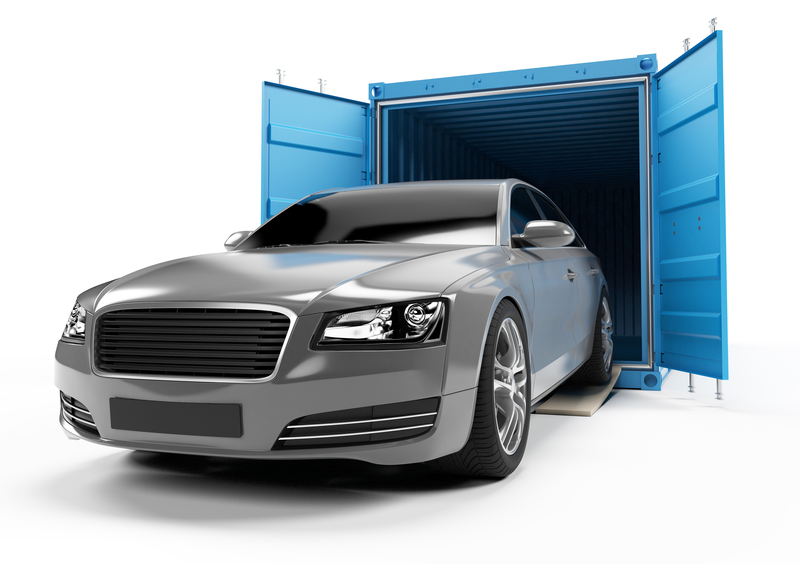Moving Your Piano: A Delicate Dance for the Pros
Posted on 04/06/2025
Moving Your Piano: A Delicate Dance for the Pros
The Art and Challenge of Piano Moving
Moving your piano is no ordinary feat. With their enormous weight, awkward shape, and delicate internal components, pianos require specialized techniques, tools, and expertise for safe and successful transportation. Whether you own an upright, baby grand, or concert grand, relocating your precious instrument is a challenge best left to professionals. In this comprehensive article, we'll discuss why piano moving is so complicated, what the process involves, how to choose the right moving service, and tips to help you prepare your piano for its delicate journey.

Why Moving a Piano Is Not Like Moving Furniture
At first glance, a piano may seem like just another piece of heavy furniture. However, nothing could be further from the truth! These majestic instruments are unique for several reasons:
- Weight distribution: Pianos are extremely heavy (ranging from 300 to 1400 lbs) with much of their weight concentrated in one area.
- Delicate construction: There are up to 10,000 moving parts in a piano. Any bump, jolt, or improper angle could cause irreversible damage.
- Finish and casing: Pianos often have beautiful wood finishes or custom veneers that scratch easily.
- Value: Beyond their monetary price, most pianos have immense sentimental and musical value.
This is why the task is a delicate dance requiring the finesse, strength, and know-how of professional piano movers.
Types of Pianos and Their Moving Challenges
In order to appreciate the complexities of professional piano relocation, it's helpful to know the main types of pianos:
Upright Pianos
- Weigh between 300 and 800 lbs
- Vertical shape, often fitting through standard doorways
- Still require careful tilting and securing to avoid internal damage
Grand Pianos (Including Baby Grands and Concert Grands)
- Weigh up to 1400 lbs
- Vast length (baby grands start at 4'5", concert grands up to 9'), often requiring disassembly
- Irregular balance and sensitive legs, pedals, and lyre
Digital Pianos
- Generally lighter but still require careful handling
- Electronic components can be delicate and sensitive to moisture and impact
Regardless of the type, moving a piano safely and efficiently is a true craft.
How Professional Piano Movers Work Their Magic
Professional piano moving teams are more than just muscle. They're trained technicians who understand piano mechanics, specialized equipment, and transportation logistics. Here's what the process typically involves:
Pre-Move Consultation
- Assessment of piano type, size, and weight
- Evaluation of the building layout (stairs, elevators, doorways, tight turns)
- Measurement and planning of exit and entry routes
Specialized Equipment
Pros don't rely on standard moving dollies or pads. They invest in:
- Piano skids/boards: Heavy-duty platforms with strapping to safely hold the piano
- Moving straps: Custom-designed for securing and maneuvering the instrument
- Padding and wrapping materials: Protecting the casing against scratches and dents
- Ramps, dollies, and hoists: For challenging locations and multi-level moves
Disassembly When Necessary
With grand pianos, careful disassembly is often required:
- Detaching the music rack, piano lid, legs, and pedal lyre for safer transport
- Individually wrapping all components to prevent damage
- Clearly labeling parts for smooth reassembly at the new location
Secure Loading and Transportation
- Safely securing the piano in the moving truck to avoid shifting
- Climate-controlled trucks for protection from humidity and temperature changes
- Experienced navigation of stairs, tight spaces, and lifts
Reassembly and Placement
At your new destination, the experts will:
- Carefully reassemble all parts
- Place the piano in its new home with attention to floor safety and acoustics
- Advise on final tuning and climate adaptation after the move
How to Prepare for the Piano Move
Although hiring professional piano movers is essential, you should also play your part in preparing for the move:
Before Moving Day
- Clear all personal items: Remove sheets, music, lamps, or decorative items from the piano and surrounding area.
- Secure pets and children: Keep the moving path simple and safe for both movers and loved ones.
- Inform movers of obstacles: Notify about narrow passages, uneven flooring, or any potential hazards in advance.
- Prepare your new location: Ensure the new space is accessible and has adequate room for maneuvering the piano.
The Day of the Move
- Be available: Stay on-site to answer questions and direct the movers as needed.
- Keep the paths clear: Ensure hallways, stairs, and entrances are free of obstructions.
- Take photos: For peace of mind and insurance, photograph your piano before, during, and after the move.
The Risks of DIY Piano Moving
Trying to move a piano without the expertise or equipment of a specialist piano moving service is risky for many reasons:
- Personal injury: Pianos can crush or severely injure those without proper lifting and maneuvering skills.
- Instrument damage: Broken legs, snapped keys, damaged pedals, and ruined finishes are common in DIY attempts.
- Property damage: Walls, floors, stairs, and doors often bear the brunt of an amateur move.
- Lack of insurance: Most homeowner policies don't cover improper handling during a move; professional services are insured and bonded.
In almost every case, you're saving time, money, and heartbreak by relying on the pros.
How to Choose the Best Piano Moving Company
Not all moving companies are created equal--especially when it comes to handling irreplaceable instruments like your piano. When choosing a piano moving specialist, consider the following:
Experience and Reputation
- Look for companies specializing in piano moves, with years of proven experience.
- Check online reviews, testimonials, and professional associations for feedback.
Insurance and Credentials
- Verify that the movers are fully insured (covering both damage and worker injury) and licensed for specialized transport.
- Ask for proof of insurance and bonding.
Transparent Pricing and Process
- Request a detailed quote with no hidden charges.
- Ask about the process they follow, including protective measures, equipment, and timeline.
Specialist Equipment
- Ensure the company uses genuine piano moving boards, straps, and padding.
- For multi-story moves, check whether crane or lift services are available if needed.
Customer Service
- Choose a mover who is friendly, responsive, and forthcoming with answers and advice.
- A great piano mover will guide you from the quote through post-move placement.
Piano Moving Tips: Do's and Don'ts
- Do: Hire a specialized piano moving service for guaranteed safety and expertise.
- Don't: Attempt to wheel or drag a piano across floors, which can destroy both the instrument and your property.
- Do: Prepare your space and communicate clearly with your movers.
- Don't: Underestimate the importance of post-move tuning--always have a qualified piano technician tune your instrument after it settles.
What to Expect After Moving Your Piano
Once your piano arrives at its new home, it needs time to adapt to new surroundings. Here's what to expect:
- Settling period: Pianos may need a few weeks to acclimate to new humidity and temperature, affecting their tuning and sound.
- Professional tuning: Always arrange for a post-move tuning by a certified piano technician.
- Periodic checks: Inspect for any external or internal damage, unusual sounds, or issues with pedal/keyboard action.
Your movers should provide advice on ideal placement to protect your piano from sunlight, moisture, and drafts.

Frequently Asked Questions About Piano Moving
How much does professional piano moving cost?
Piano moving fees depend on piano type, size, distance, number of steps, and complexity. Estimates typically start around $150-$500 for local upright moves and can increase to $1000+ for large grands and cross-country relocation.
How long does it take to move a piano?
A local move usually takes 1-3 hours, depending on difficulty. Long-distance moves include extra time for loading, transport, and acclimation at the new location.
Can two strong people move an upright piano?
It's never recommended. Even the lightest upright pianos require at least three experienced movers using the right equipment. Attempting this yourself can cause injury or damage.
Will my piano need tuning after the move?
Yes. The instrument will go out of tune with transport and changes in climate. Schedule a tuning about two weeks after it settles in your new space.
Can piano movers move other household items?
Some piano moving specialists focus only on instruments, while others may handle a range of valuables. Always inquire about their services before hiring.
Conclusion: Trust the Experts with Your Piano's Journey
Whether you're moving across town or to a new state, moving your piano is not just a physical task--it's a delicate dance requiring precision, knowledge, and respect for one of music's finest creations. By entrusting your instrument to true pros, you ensure its sound and beauty last for generations to come.
Looking for peace of mind? Choose a qualified, experienced piano moving specialist to orchestrate your piano's safe arrival at its new home.
Remember: The next time you plan on moving your piano, take the professional route and enjoy the music for years to come.



